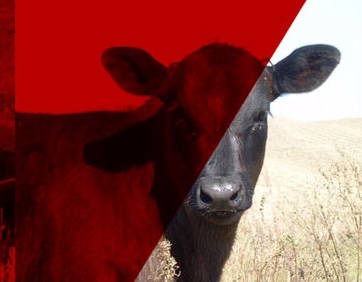This article was originally published in Progressive Cattle magazine.
The way calves are managed during the backgrounding phase can greatly influence cattle performance down the road. Winter rate of gain, implant strategy, and housing system all add to the complexity of backgrounding systems, which ultimately impact growing and finishing cattle performance.
Although implants increase average daily gain of beef cattle in all stages of production, implants are not as commonly used during backgrounding compared to the finishing phase. Calves wintered at a low rate of gain experience higher gains during the summer grazing period compared to calves wintered at a high rate of gain, which is referred to as compensatory gain. However, those calves typically do not catch up in weight to the calves wintered at a high rate of gain by the end of the summer grazing season.
To better understand the interaction of backgrounding system and implant use on growing calf performance, a recent study was conducted by the University of Nebraska-Lincoln. This two-year study explored how winter rate of gain and implant strategy during the backgrounding and summer phases influence steer performance, forage intake, and compensatory gain.
Winter Backgrounding Phase
Steer calves were backgrounded in pens or grazed corn residue for nearly 115 days. Winter rate of gain was targeted at 1 lb/d (low rate of gain) or 2 lb/d (high rate of gain). Steers grazing corn residue were supplemented with 2.2 lb (low rate of gain) or 6.4 lb (high rate of gain) of dried distillers grains plus solubles (DDGS) on a dry matter basis per head daily. For the steers backgrounded in pens, the low rate of gain was achieved by feeding 10% modified distillers grains, 86% smooth bromegrass hay, and 4% supplement. The high rate of winter gain was achieved by feeding 30% modified distillers grains, 66% smooth bromegrass hay, and 4% supplement. During the winter backgrounding phase, calves grazing corn residue were implanted with a Revalor-G® or received no implant.
The use of Revalor-G® in steers grazing corn residue and supplemented with DDGS increased winter gains by an average of 0.20 lb/d or about 12%. Steers wintered at a high rate of gain grazing corn residue had greater gains than those housed in pens (2.09 lb/d vs. 1.94 lb/d). However, steers wintered at a low rate of gain had similar gains regardless of housing system.
Summer Phase
To measure forage intake, steers were housed in pens during the 103-day summer phase. The summer diet was developed to have a total digestible nutrients (TDN) content similar to grass pasture (55.2% TDN). The diet consisted of 40% corn silage, 25% wheat straw, 30% grass hay, and 5% supplement, which provided 20 g/ton monensin. During the summer phase, calves were implanted with Revalor-IS® or received no implant.
As expected, steers wintered at a low rate of gain had greater gains during the summer due to compensatory gain. However, steers wintered at a high rate of gain maintained heavier body weights through the summer. Administering an implant to calves wintered at a low rate of gain did not make up for the difference in weight by the end of the summer. Steers wintered at a low rate of gain consumed more feed as a percentage of their body weight during the summer phase, suggesting increased intake is an important mechanism of compensatory gain.
Administering one implant during the summer phase resulted in the greatest gains followed by the use of implants in both the winter and summer phases. For steers wintered at a low rate of gain, the use of two implants reduced the percentage of weight that was compensated from 20% to 9%.
Housing system during backgrounding did not impact summer gains. Steers wintered at a low rate of gain grazing corn residue compensated by 23.4% compared to calves wintered at a high rate of gain. Steers backgrounded in pens compensated 19.25% during the summer, indicating that cattle performance in later phases of production is influenced by winter rate of gain and not by housing system.
Summary
This study demonstrated that increasing winter rate of gain from 1 lb/d to 2 lb/d results in more pounds of weight sold at the end of summer. The use of one implant either in the winter or summer phase can maximize pounds sold. However, for calves wintered at a high rate of gain, using two implants (one in each phase of production) reduces compensatory gain and allows producers to retain more of the weight gained during the winter through the end of the summer.
This article is a summary of the 2025 Nebraska Beef Cattle Report, “Interaction of Backgrounding System and Implant Use on Growing Calf Performance.”

